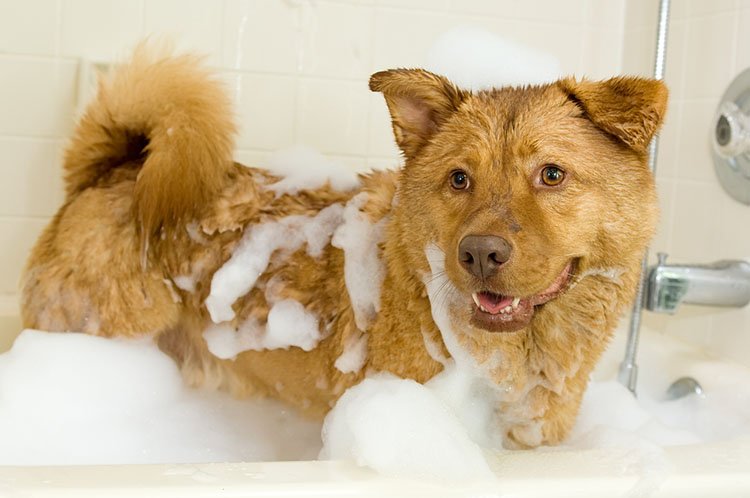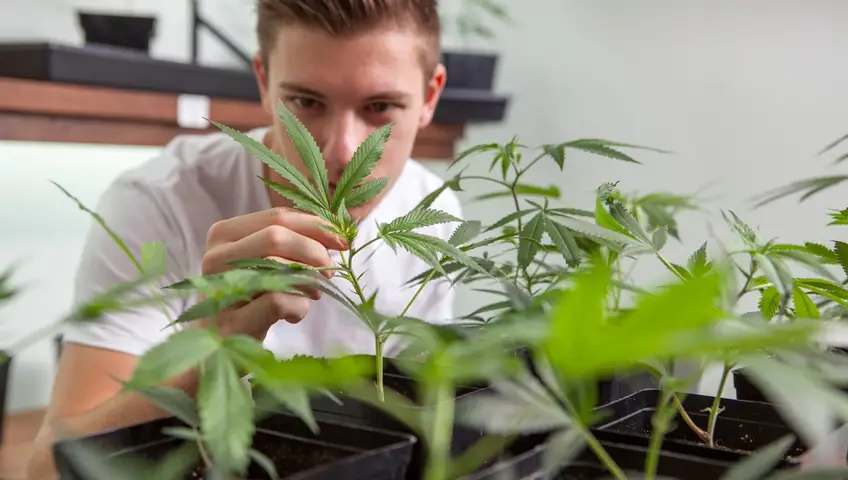Does Dog Conditioner Works for Dry Skin?

Dry skin is one of the most frustrating problems for dog owners. While the exact treatment for dryness and itchiness in pups depends on the root cause of the issue, there are some simple things you can do to comfort and soothe your beloved pet at home. Dog conditioner is one of the most effective solutions for dry and itchy skin in dogs. These products contain ingredients known to replenish natural oils in the skin of your dogs.
When a conditioner is used after every shampoo session, it helps alleviate dryness and related discomfort to a great extent. The rich formula contains beneficial ingredients which will keep the skin and coat of your dog moisturized. Whether your dog has allergies or dry, matted skin, this formula works wonders for his skin, helping restore moisture and keeping his coat feeling extra soft. Some people also find success by applying coconut oil on dogs coats and skin to aid in dry skin.
The dirt and oils that accumulate on the dog coat may cause some of the dog skin problems that you are concerned with. There are a lot of potential causes for dry skin, making diagnosing skin conditions in dogs difficult. Dry skin can hit when the weather changes – or even when conditions change inside the dogs home environment.
There are a number of conditions or problems beyond weather that could cause dry, scratchy dog skin during the winter. Vets really caution that some causes of itchy skin on dogs can be severe, and could cause medical problems if left untreated. In addition to parasites, more serious chronic health conditions including food and environmental allergies, Cushing’s disease, and hypothyroidism may dry your dogs skin as well.
Two major metabolic conditions that may contribute to dogs dry skin are paw licking Cushing’s disease and Hypothyroidism. Your dogs skin needs a certain amount of moisture in order to keep its elasticity and suppleness, and truly dry air may result in them losing this moisture.
Your vet can diagnose and treat conditions that need medical care, but if your dog is otherwise healthy, you can improve his or her dry skin and coat with some simple home remedies. As long as your dog does not show any other signs of disease or discomfort, you have some remedies that you can try at home to ease her dry skin — and without necessarily scheduling a trip to the vet.
The right kind of dog conditioner can help, softening and moisturizing your dogs skin. The best cure for your dry skin is to keep up with the moisture-rich shampoos, and do everything you can to get your dog ready for harsh conditions beyond Salmon Oil.
Oatmeal and aloe are proven skin protectants that help form protective barriers, which slows down natural oils being lost from the coat while soothing the itchy, itchy, flaky skin. In addition to olive oil’s ability to heal dry, flaky skin and brighten up your dogs coat, olive oil can also boost their appetite and aid in constipation. Coconut oil is also great for your dogs immune system, heart and liver health, and overall skin and coat health.
Does Dog Conditioner Works for Dry Skin? Read More »
 With the legalization of cannabis in many regions, growing your favorite weed strain at home has become a popular and rewarding endeavor for enthusiasts. Cultivating cannabis offers a hands-on experience that allows you to tailor the growing environment to suit the specific needs of your chosen cannabis variety, resulting in high-quality buds with unique flavors, aromas, and effects. Whether you’re a seasoned grower or a novice cultivator, here’s a comprehensive guide on how to grow your favorite weed strain at home.
With the legalization of cannabis in many regions, growing your favorite weed strain at home has become a popular and rewarding endeavor for enthusiasts. Cultivating cannabis offers a hands-on experience that allows you to tailor the growing environment to suit the specific needs of your chosen cannabis variety, resulting in high-quality buds with unique flavors, aromas, and effects. Whether you’re a seasoned grower or a novice cultivator, here’s a comprehensive guide on how to grow your favorite weed strain at home.